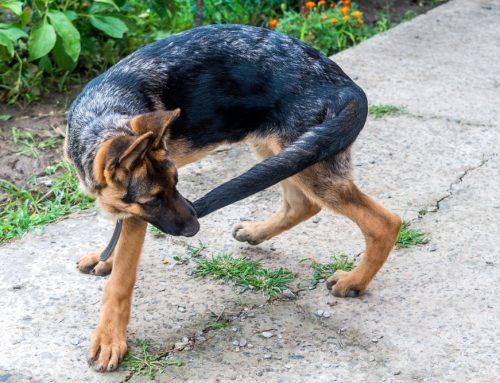When it comes to your pet, the thought of putting them under anesthesia can be scary. Our Fremont Animal Hospital team understands that the thought of anesthesia can make pet owners uncomfortable, but anesthesia—whether mild sedation, local anesthesia, or general anesthesia—provides numerous benefits to pets. Anesthesia ensures that your pet will experience no pain or fear during surgery, and the procedure is accomplished more easily in a fraction of the time. Your pet can have their nails trimmed and be groomed without stress, and major abdominal or orthopedic surgeries can be performed with minimal pain and discomfort under a multimodal anesthetic protocol. So, although you may be worried about your pet undergoing anesthesia, trust in our team to provide highly skilled and experienced care. We explain five ways that we endeavor to keep our anesthetized patients safe.
#1: We conduct a thorough pre-anesthetic physical exam
Although your pet may have had a recent appointment, we will conduct a physical exam the same day of their anesthetic procedure. A lot can change in a day, and we want to ensure we do not miss any potential health issues. Our team will auscultate your pet’s heart and lungs, listening for irregularities in heart and respiratory rates and rhythms, and for any crackles or wheezes that indicate a problem. We will also assess your pet’s gum color, ensuring blood is perfusing their body correctly. We will take a temperature to ensure your pet is not feverish or too cold, which can become an anesthetic complication.
During your pet’s physical exam, we also obtain their pre-anesthetic vital signs that we will use during their procedure as baseline parameters of your pet’s “normal” to ensure no significant changes occur.
#2: We perform pre-anesthetic screening tests
While a physical exam gives us some information about your pet’s internal health, blood work, X-rays, and additional diagnostic tests give us a great deal more. A healthy pet typically receives pre-anesthetic blood work, but they may also need X-rays, a urinalysis, ultrasound, and other tests to pinpoint a disease process prior to anesthesia. Blood work generally consists of a complete blood count (CBC) and chemistry panel, which will tell us if anemia, infection, inflammation, dehydration, or organ dysfunction are present. Understanding your pet’s health status allows us to personalize their specific anesthetic procedure to ensure their safety.
#3: We customize each patient’s anesthetic protocol
Once we have your pet’s health status from pre-anesthetic examination and testing, we can design the most appropriate anesthetic protocol. Anesthetic agents are metabolized through the liver and kidneys, so if we identified organ dysfunction on your pet’s blood work, we can adjust their protocol. Or, we may find that your pet is dehydrated or fighting an infection, which will change our intravenous fluid rate and the medications administered prior to, during, and after a procedure. We never use the same cookie-cutter anesthetic protocol for all our patients—we use the most appropriate medications that will give your pet pain relief and sedation, with the least risk of adverse effects, for their specific health needs.
#4: We invest in quality monitoring equipment
When you watch human medicine TV shows, you likely see patients hooked up to a plethora of monitors that send out an assortment of beeping noises. Our surgery suite is on par with human operating rooms in terms of quality monitoring equipment. We know that nothing can replace a veterinary professional’s experienced hands and eyes, but monitoring equipment allows us to catch a potential issue at a glance.
Monitoring devices help us keep an eye on your pet’s:
- Heart rate and rhythm
- Oxygen and carbon dioxide levels
- Respiratory rate
- Temperature
- Blood pressure
Using these values, we can assess your pet’s response to anesthesia and their procedure, and make adjustments if needed.
#5: We spend time furthering our education on anesthesia and patient care

Anesthesiology is a complicated subject, as are pharmacology, physiology, and biology. Understanding how your pet’s body works, and how anesthetic agents affect bodily functions, is critical for providing a safe anesthetic experience. While our team is already highly trained and experienced in the science of anesthesia, we continue to pursue further education in this complex subject to ensure we always provide our patients with the best, most up-to-date care.
If your pet is scheduled for an anesthetic procedure and you have questions or concerns, do not hesitate to contact our Fremont Animal Hospital team. We will walk you through every step, and explain how we strive to keep every patient safe while in our care.















Leave A Comment